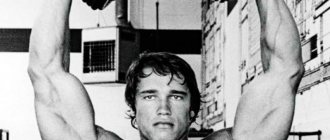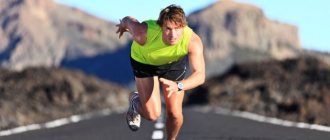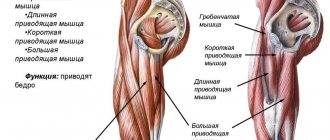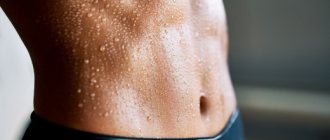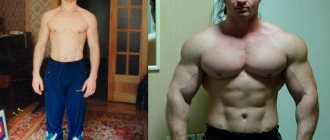Andrey Skoromny is a famous Russian athlete, master of sports in bodybuilding. In addition to participating in various competitions, Andrei Skoromny became famous for developing his own system of exercises for gaining mass and maintaining a video blog dedicated to his training methods, in which he gives advice and recommendations to novice bodybuilders and simply people who want to increase mass.
Nutrition
The basis of any diet is energy value, i.e. calorie content.
To grow muscle mass, we create a calorie surplus.
1 step for growth, you need to add 15% to the daily amount of calories.
BJU is the second important factor.
The misconception is that the more protein, the more growth.
According to research, on the contrary, those who have a surplus of carbohydrates grow more in their muscles.
Next are fats, and those who created a protein surplus grew the least.
We consider a normal person, if obesity we need to take into account excess weight.
Protein 1.5-1.7 g per 1 kg of weight. (2.5 is a bit too much, used for fat burning.)
Protein variety and quality also need to be taken into account.
Fats lower limit 0.5-0.7 g per 1 kg. On average 1.1-1.5 g per 1 kg. Security forces need fat. Unsaturated fats 60%-80% should be in the fat basket.
Carbohydrates 80% whole sources (meat, fish, rice, etc.), the rest multi-component choco-pie, etc.
The number of meals per day is secondary, first the calorie content and BJU.
3-4 meals are no better and no worse than 5-6 meals.
Advice for bodybuilders
All strength athletes really need aerobic cardio, low-intensity cardio, for their cardiovascular system.
Cardio is preferably 2 times a week for 20-30 minutes.
Before training, proteins and carbohydrates. Try not to eat fats. 40 minutes before training, to each their own, for beginners 1.5 hours.
After training, get quick protein, carbohydrates are not so important, there are no special advantages in consuming carbohydrates.
During BCA training and after training, there is no point in using BCA during the day. 15 minutes after training, isolate. It's all about gaining weight.
The body strives for homeostasis!
Metabolic adaptation, addiction – the body must be surprised.
Refeed is an increased amount of calories, namely carbohydrates. Refeeds must be included.
The lower your fat percentage, the more refeeds you can afford.
5 days on a diet, 2 days refeed. Starchy carbohydrates are better (bread, dried goods, pasta, rice, buckwheat), they replenish muscle glycogen.
It is necessary for a good mood, so that there is no irritability, fatigue, etc.
You can’t stay in a calorie deficit all the time!
3-4 workouts per week for beginners is very good! The most important thing is to restore the body, you need to feel your body.
Sports biography
The starting point of his sports biography can be considered a trip to Artek, which became a real revolution in consciousness for the ambitious guy. The concentration of so many interesting people and ideas in one place simply could not leave anyone indifferent. Returning home, he already knew for sure that only Moscow would give him the opportunity to realize himself.
We must pay tribute to his parents - they supported this decision, giving all their savings so that he could enroll in the paid department of the Moscow Automobile and Highway Institute. Already in his second year he switched to the budget department, which also speaks of his strong-willed qualities.
The desire to increase the level of physical development led me to the gym in 2010. At first, these were ordinary independent exercises in a rocking chair. A little later - serious training under the guidance of Alexey Kireev. The professional training process almost immediately produced results and in 2010 made him a champion among juniors.
Training program from Andrey Skromny
without changes or adjustments in its original form from the author.
Day 1
SHOULDERS
Circles:
- Wiring in the simulator for the rear delta
- Sitting on a bench in an inclined position on the rear deltoid
- Lying on a bench (30 degrees) face down on the rear deltoid
- Sitting on a bench to the side on the middle deltoid
- Row of 2 dumbbells to the chin
- Lifting the barbell in front of you with straight arms - on the front deltoid
- Seated dumbbell press
- We hold the pancake in front of us and steer left and right for 5 laps without rest between exercises. Rest 7-10 minutes between circles
DAY 2
LEGS
- SuperSet: Curls + Extensions – 4 x 20 reps
- Lunges 4, 20 on each leg
- Platform press 4 x 20
- Light squat 4 to 15
- Dumbbell rows on straight legs 4 to 12
DAY 3
Chest - Back
- SuperSet 1.1 Crossover on a bench 5 to 15 1.2. Wide grip pull-ups 5 x 15
- C-C 2.1 Incline dumbbell press 45g. 5 to 12-15 2.2. Hammer with one hand 5 to 12-15
- C-C 3.1 Horizontal hammer press 4 to 15 3.2 Horizontal block row with reverse grip shoulder width 4 to 15
- S-S 4.1 Butterfly (Pek-Dek) in the simulator 4 to 12 4.2 Crossover on straight arms towards you (like a half-over) 4 to 12
DAY 4
The essence of Andrei Skoromny's technique
The essence of the program developed by the athlete is to pay great attention to exercises aimed at training the target muscles. During the training, not only the muscles of the arms are used, but also other parts of the body. A training interval of one week involves paying special attention to loading the arm muscles only once, since the athlete believes that when other muscle groups are loaded, the load also falls on the arms. After working out each muscle group, an arm exercise is added, repeated many times (an important feature is light weight loading and minimal rest between exercises).
Through trial and error, Andrey realized that in order to achieve maximum volume, it is necessary to train with a concentrated load of light weight. That is, the essence of the technique can be expressed as follows: for small muscles - light weight, for large muscles - heavy.
Education
Andrey's student years were spent in the north of Russia, in the city of Purpe. Already from his school years, the boy was interested in various sports, was active, talented, showed himself to be hardy and strong in many sports. From such an early age, the future athlete showed incredible athletic results and physical capabilities. After graduating from school in 2006, Andrei Skoromnykh moved to Moscow to obtain higher education and realize his life goals, but this was not easy for him. Parents are collecting all their savings for the sake of their child's future, and Andrei knows that he cannot let them down.
Achievements[edit | edit code]
Andrey Skoromny participated in the following bodybuilding competitions:
2010
- Moscow Cup: juniors absolute, 1st place
- men up to 90 kg, 3rd place
- Central Federal District Cup: juniors absolute, 1st place
- men up to 90 kg, 4th place
- Russian Cup (FBFR): juniors over 75 kg, 1st place
- juniors absolute, 1st place
- men up to 90 kg, 3rd place
- Moscow Region Championship: juniors absolute, 1st place
- men up to 100 kg, 3rd place
- Moscow Championship: juniors absolute, 1st place
- men up to 90 kg, 2nd place
- Russian Championship (FBFR): juniors over 75 kg, 1st place
- juniors absolute, 1st place
- men up to 90 kg, 5th place
2011
- Moscow Championship: men up to 100 kg, 1st place
- men absolute, 2nd place
year 2012
- Russian Championship (FBFR): men up to 100 kg, 2nd place
- Champions Cup: men's absolute, 5th place
- Grand Prix Fitness House: men absolute, 4th place
year 2013
- Arnold Amateur (IFBB): men up to 100 kg, was not among the 6 winners (the remaining places were not indicated in the IFBB protocol)
- Russian Championship (FBFR): men up to 100 kg, 2nd place.
Andrey spent 2014 in hard training
What if I can't live in the gym?
As I said, 6 workouts is the maximum frequency for the greatest muscle gains. If you can’t go to the gym that often, then try 5 or 4.
Here is a program for 5 workouts per week:
Week 1: Monday – press 1 Tuesday – pull 1 Wednesday – press 2 Thursday – rest Friday – pull 2 Saturday – press 3 Sunday – rest
Week 2: Monday – pulling 3 Tuesday – pressing 1 Wednesday – pulling 1 Thursday – rest Friday – pressing 2 Saturday – pulling 2 Sunday – rest
4 workouts per week:
Week 1: Monday – press 1 Tuesday – pull 1 Wednesday – rest Thursday – press 2 Friday – rest Saturday – pull 2 Sunday – rest
Week 2: Monday – pressing 3 Tuesday – pulling 3 Wednesday – rest Thursday – pressing 1 Friday – rest Saturday – pulling 1 Sunday – rest
For three workouts per week, this program will not be optimal.
Split push-pull training
This type of split training divides the load between different muscle types. All muscles, in terms of their functionality, are divided into rectifiers and flexors. That is, they bend and unbend our body.
The muscles that straighten the body include:
- Deltoid muscles;
- Pectoral muscles;
- Triceps;
- Long back muscles;
- Quadriceps;
- Calf muscles.
The muscles that flex the body include:
- Latissimus muscles;
- Biceps;
- Biceps femoris;
- Anterior tibial muscles;
- Abdominal muscles;
- Forearm.
When planning your workout, consider your muscle type and alternate days on which you perform these workouts.
Three stimulation methods
1. Heavy sets with heavy weights
There are two options here, alternate them every 2-3 weeks:
1a. Rest/pause. Take the weight with which you do 4-6 repetitions cleanly, after completing them, rest a little and add as many more as you can. The goal is to do twice as much in total. For example, you first performed 5 repetitions, then rested for 15 seconds, after which you were able to do 3 more times, another 15 seconds of rest and the last 2 repetitions (a total of 10).
1b. Cluster approaches . Use a weight that you can lift 2-4 times. With it, you need to do as many one-repetition sets (singles) as possible, separated by 15-20 seconds of rest.
Stop when you realize that you can only complete the next approach with poor technique.
Execution example: 1 repetition, 15 seconds rest, 1 repetition, 15 seconds rest, 1 repetition, 20 seconds rest, 1 repetition, 20 seconds rest, 1 repetition, completion of the exercise.
2. Activation of mTOR
Here's the most effective and painful technique for this: take a weight with which you can do 8-10 repetitions, and drag out the negative phase (lowering the projectile) for 4-5 seconds. When you reach failure, continue to hold the weight at the bottom point (where the working muscles are stretched) for as long as you can tolerate.
3. Accumulation of fatigue (“muscle-repetitions” or “myo-repetitions”)
The “Myo-reps” technique (loosely translated as “muscle-repetitions”) was proposed by the Norwegian trainer Borge Fagerli.
It's similar to rest/pause, but uses lighter weight: pick a weight you can do 10-12 reps with, then push the exercise to failure. Then rest for 20 seconds, after which perform 3 repetitions. And so on until you can only handle 2 repetitions - then you need to stop.
Login to the site
Natural training. How to increase the level of anabolic hormones with the help of strength training. Part 12016-03-20 08:32 RepoRteR
One of the most interesting discoveries in recent times has been the information that the level of lactic acid in the blood determines the hormonal response of two important anabolic hormones: testosterone and somatropin . Lactic acid enters the bloodstream from muscles that are exposed to resistance exercise.
Accordingly, knowing which load modes contribute most to the formation of lactic acid and increasing its concentration in the blood, we are able to control the hormonal response to our training and, accordingly, muscle growth. Growth hormone Analysis of available publications regarding the effect of physical activity on the secretion of somatotropic hormone (GH) allows us to identify the following factors that stimulate an increase in the concentration of GH in the circulatory system: • The volume of muscles involved in the work; • The amount of load (weights) used when performing exercises; • Volume of physical activity; • Duration of rest intervals between stages of exercise. As we can see, the above factors directly show the dependence of the increase in growth hormone on the amount of lactic acid formed. Let's look at why this is so. The volume of muscles involved in the work determines the amount of lactic acid produced simultaneously. The larger muscle masses work simultaneously, the more lactic acid is formed and enters the blood.
We have all encountered the unpleasant sensations that arise after performing 20 repetitions of squats to failure; they are caused precisely by the acidification of the blood with lactic acid. If you do the same 20 repetitions using a small muscle group, for example, biceps curls, then you will not feel anything like that, since the blood will be acidified to a much lesser extent. The amount of load (weights) used when performing exercises determines the quantity and qualitative composition of the muscle fibers involved. The greater the weight of the load, the more high-threshold fibers are involved in work, and high-threshold fibers have the lowest oxidative potential, that is, glycolysis in them occurs as actively as possible with the formation of a large amount of lactic acid. The amount of physical activity determines the amount of lactic acid produced. It is quite natural that after three approaches, more lactic acid will be formed and enter the blood than after one equal in regimen. The duration of rest intervals between stages of exercise. Everything is quite simple here. Lactic acid changes the acid-base balance of the blood, for this reason the body uses the so-called buffer systems that neutralize lactic acid, returning the blood to a state of homeostasis (the effect is similar to taking the drug "Rennie" for heartburn, the latter, thanks to the calcium it contains, eliminates the increased acidity of the stomach juice).
If the rest between sets is short, then each successive approach will “throw” lactic acid into the bloodstream, and the rate of its accumulation will exceed the rate of its neutralization. The concentration will begin to increase. I further quote: “Reducing the duration of rest intervals between sets during exercise has been shown to lead to the most noticeable increase in the lactate response during strength exercise (Kraemer et al., 1990, 1993).
At the same time, a reduction in rest intervals will also affect the weight of weights that the exerciser can lift (Kraemer et al., 1987), therefore, there is a critical modulation of the weight of the weights used, as well as the volume of tissue involved in performing the work, which determine the response increase STG" [1].
That is, short rest between approaches, on the one hand, contributes to the accumulation of lactic acid, but on the other hand, it forces us to use lighter weights, which will be reflected in a decrease in the number of muscle fibers involved in the work and a decrease in the amount of lactic acid produced. This means that you should stick to some kind of golden mean and not get carried away with working with too little weight, as happens when pumping. There is another interesting factor that we did not mention above, but it is definitely worth mentioning, since it is directly related to static dynamics, which has recently gained great popularity. This is hypoxia of working muscle cells. “Takarada (Takarada et al., 2000) showed that occlusion (impaired blood circulation) of the hand can significantly affect the level of GH, markedly increasing the concentration of the hormone at a relatively low intensity (20% of 1RM), while without occlusion there is no change no hormone levels were observed.
It can be assumed that in the regulation of secretion of the GH isoform with mol. weighing 22 kDa, hypoxia and acid-base imbalance play a major role (Sutton et al., 1983)” [1]. That is, even a low-intensity load, which means working with small weights, if it occurs with muscle fibers experiencing limited access to oxygen, for example, in the static dynamics mode or using belts tightening the muscles according to the “KAATSU” system, will give a good hormonal response. This is obvious: under hypoxic conditions, even oxidative muscle fibers begin to work due to anaerobic glycolysis, since oxygen is needed to convert glycogen (glucose) into pyruvate, and if it is deficient, lactic acid will be formed instead of pyruvate. As a conclusion about the effect of lactic acid on the secretion of growth hormone, I would quote the conclusion from the book “The Endocrine System, Sports and Physical Activity”: “The most stunning discovery related to the variable programming elements of the training program and growth hormone was the effect they have on acid -alkaline balance, which plays a major role in stimulating the secretion of growth hormone into the circulatory system. Each of the four factors mentioned above (see above - Editor's note) can be manipulated to influence metabolic processes, accompanied by limited or, conversely, increased accumulation of hydrogen ions and a decrease in blood pH, which in turn is responsible for almost half of the total change production of growth hormone. Thus, a shift in the acid-base balance (namely, an increase in ATP hydrolysis, a decrease in pH, an increase in the concentration of hydrogen ions) becomes the main factor determining the content of the GH isoform with mol. weighing 22 kDa in the blood (editor's note: the main isoform of endogenous somatropin) (Gordon et al., 1994)." Testosterone Almost similar factors influencing the hormonal response have been established in numerous studies for testosterone: “It has been confirmed that the hormonal response to strength exercises depends on the volume of muscles involved in the work, the intensity of the training session, and the duration of rest between approaches and exercises. , as well as previous occupational experience (Fleck, Kraemer, 1997). Both concentric and eccentric exercise can increase blood testosterone levels (Durand et al., 2003).”
The only new factor here is training experience; the greater it is, the more difficult it is to achieve a hormonal response. In the rest, the same connection is seen between the load regime and the formation of lactic acid. However, this issue was not previously fully studied and parallels with growth hormone were not drawn.
However, back in 1997, Taiwanese scientists published a study originally titled “Lactate and the effects of exercise on testosterone secretion: evidence for the involvement of a cAMP-mediated mechanism.” In this study, they argue that the cells that produce testosterone begin to secrete it when exposed to lactic acid. Previously, a similar study had already been conducted on animals that did not engage in physical activity, but only received lactic acid in the form of a dietary supplement.
Taiwanese scientists used rats for an experiment that swam in water for 10 minutes. Then the concentration of lactic acid, testosterone and luteinizing hormone in the blood was analyzed. We have already published these data, but it would not be a sin to repeat them for clarity: Before load After load Lactic acid, mmol/l 2 7 Testosterone, pg/ml 200 400 Luteinizing hormone, ng/ml 1 3 All three indicators increased. But are the two bottom indicators in the table a consequence of the first? Scientists also found increased concentrations of lactic acid in the testicles of rats. Next, the scientists administered lactic acid intravenously, trying to recreate hormonal levels after swimming. Before the introduction of lactic acid After the introduction of lactic acid Lactic acid, mmol/l 2 5 Testosterone, pg/ml 200 800 Luteinizing hormone, ng/ml 1 1.5 The level of luteinizing hormone increased minimally, but the increase in testosterone secretion was very significant. Scientists explain this by the fact that lactic acid affects not only the testicles, but also other hormones that stimulate the release of testosterone. This was proven by the following experiment, when rat hypothalamic cells were placed in a lactic acid solution for 30 minutes. The analysis showed a significant increase in the secretion of gonadotropin, a hormone that is responsible for the production of follicle-stimulating and luteinizing hormones in the pituitary gland. Thus, we have an excellent guideline for how training should be organized by a “natural” person, relying only on endogenous anabolic hormones, such as somatropin and testosterone. Let's try to consider options for constructing the training process and analyze the existing ones. Continuation…
Author: Dmitry Yakovina
Is it possible to gain muscle mass and burn fat at the same time?
2016-03-20 12:04 RepoRteR
There is one question that haunts many. Because the answer to it is most often not optimistic. “Is it possible to build muscle and burn fat at the same time.” In most cases, fitness experts or simply experienced bodybuilders say no. However, I would not be so categorical, primarily because it is necessary to clarify what scale of these processes we are talking about.
Any phenomenon has a “scale,” that is, a certain degree of expression of this phenomenon. And if we proceed, in principle, from whether it is possible to simultaneously build muscle mass and burn fat, then the answer is clear. YES! This is an absolutely natural course of events for our body. For example, at night, when we do not receive energy from the gastrointestinal tract, which in physiology is called the post-absorptive period, our body actively extracts energy from fat reserves. It is for this reason that up to 80% of the daily intake of somatropin is secreted at night.
A normal person sleeps at night and does not eat, because nature has adjusted the biorhythms of one of the main lipolytic hormones in such a way as to ensure a stable flow of energy during night sleep. Somatropin stimulates lipolysis, and lipolysis gives us fatty acids ready for consumption. At night, we actively build muscle tissue, and part of the fat energy goes to ensure protein synthesis. That is, at least during the night period, we build muscle and burn fat AT THE SAME TIME. Those who like to read scientific research should have noticed that the result of many of them is an increase in lean muscle mass and a simultaneous loss of fat. We are talking about experimenting with training regimens, diets, or taking pharmacological drugs and nutritional supplements. As a small example, I will give a few similar ones. Thus, in the “Korean Journal of Physiology and Pharmacology” in 2014, a study was published showing that experiment participants who took ursolic acid as a supplement and regularly worked out in the gym gained an average of 1.17 kg of muscle mass and lost 3 kg over 8 weeks. fat Italian scientists published the results of a study in the Journal of the International Society of Sports Nutrition that examined the performance of experienced gymnasts during a 30-day period of following a keto diet (no more than 25 grams of carbohydrates per day). The total number of kilocalories per day for the athletes was 1970. Protein intake was high: 2.8 g per kilogram of body weight per day. At the end of the experiment, the gymnasts added an average of 800 grams of muscle mass (which is not bad in 30 days for already experienced athletes, and not even bodybuilders) and lost 2 kg of fat. Even more impressive results were announced in the journal Clinical Endocrinology and Metabolism in July 2013. In particular, scientists studied the effect of testosterone injections on fat deposits in the body of non-exercising men. All participants in the experiment were on the same diet, the energy value of which was 35.82 kilocalories and 1.3 grams of protein per kilogram of body weight per day. That is, a 100-kilogram man consumed 3582 kilocalories and 130 grams of protein. After 20 weeks, participants who received testosterone injections of 300 mg and 600 mg per week increased lean muscle mass by 10 and 17%, respectively, while reducing total body fat by 10%. There are very, very many such studies, and none of the scientists has ever been surprised by the fact of changes in body composition, expressed in the growth of lean muscle mass and loss of fat mass. This is normal, it is natural for the human body and especially for a physically active person. You just need to understand that such changes are possible only within certain, fairly limited limits.
Of course, when a person radically goes into mass gain, eating a bunch of extra calories, then there can be no talk of any fat loss. The situation is similar with “drying”. Trying to lose 10 kg of fat in a month, it is unlikely that with the level of energy deficit required for such a result, we will also be able to increase “meat”. But the fact remains a fact. It is possible to grow muscle and burn fat at the same time. Under certain conditions, on a limited scale.
Author: Dmitry Yakovina
Should you NOT eat carbohydrates after a workout?
2016-03-20 12:25 RepoRteR
Not so long ago, with the light hand of one bodybuilding guru, the idea of not consuming carbohydrates immediately after training was launched to the masses. They say that an increase in blood glucose levels will suppress somatropin secretion induced by exercise. Since this idea contradicted the well-established opinion among the masses that it is necessary to take carbohydrates after training, it attracted attention and began to be actively discussed. I think that there is no longer any need to explain that taking carbohydrates after training is NOT MANDATORY for a strength athlete, however, in fact, NOT consuming carbohydrates during this period is not mandatory. First of all, why should we be afraid of the theoretical possibility of decreased somatropin secretion? What do we lose from this? If we are cutting, then a one-time fluctuation in GH secretion should not worry us at all. The effectiveness of the diet depends on the degree of energy deficit that we create throughout the day, throughout the entire period of weight loss. Eating carbohydrates at any particular time, as well as not consuming them, is only a small part of a larger whole. If there is a deficit, we lose weight, if not, we don’t lose weight. Increasing the level of somatropin does not affect the degree of deficiency in any way. Somatropin, along with other lipolytic hormones, only serves the process of extracting energy from internal reserves when it is needed. That is a shortage! If we are gaining muscle mass and think that a decrease in somatropin secretion after training will slow down our progress, then we should not forget that protein synthesis in muscles is stimulated under the influence of the combined influence of many factors and somatropin is only one of them, and not the most significant. Well, let's turn to the facts without any theorizing: - The synthesis of muscle proteins after training increases sharply. This is the same notorious adaptation. — Taking protein within a couple of hours after training enhances this synthesis even more. A great many studies have shown this. - Taking protein-hydrohydrate mixtures, compared with proteins alone, did not show any advantages in the degree of influence on muscle protein synthesis, or the advantages were not significant. NO studies have shown that taking carbohydrates with protein impairs post-exercise muscle protein synthesis. If you ate only protein, that’s good; if you ate protein with carbohydrates, that’s also good. Synthesis is affected only by the presence of protein or its absence (in the direction of inhibition); carbohydrates have no effect. What should we be afraid of then?!! Whether you want to, consume carbohydrates after a workout or not. This is your own business. The main thing is to take this into account when calculating the total number of carbohydrates during the day, based on the goals of your training: gaining muscle mass or cutting.
Author: Dmitry Yakovina
Natural training.
How to increase the level of anabolic hormones with the help of strength training. Part 2 2016-03-20 12:54 RepoRteR
I would like to remind readers that lactic acid is not only a factor that accelerates protein synthesis in muscle cells, as well as a factor that changes the hormonal response to physical activity, but also a catabolic factor . If a high concentration of lactic acid in the blood is good, at least its excessive amount will be eliminated quickly enough by the buffer system, then the accumulation of such an element of lactic acid as hydrogen ions in muscle cells can be fraught with significant destruction of existing protein structures, exceeding the capabilities of muscle cells. cells for the construction of new ones.
Therefore, the same factors listed above, on the one hand, contribute to increasing the secretion of growth hormone and testosterone, on the other hand, due to pronounced catabolism, will not allow them to realize their anabolic potential. In particular, we are talking about short rest intervals between stages of exercise. In experiments, a minute's rest between approaches/exercises was considered optimal for increasing the concentration of lactic acid in the blood. So, doing 6-10 approaches in a row for one muscle group with a rest of a minute, there is a high probability of excessive acidification of muscle cells and all the negative consequences ensuing from this. However, it is not at all necessary to perform consecutive exercises on the same muscle groups: which muscle groups lactic acid comes from does not matter for the hormonal response. That is, exercises can be performed on different muscles alternately, but still with little rest. And such programs have existed for a long time. High Intensity Training (HIT)
First of all, the famous HIT by Arthur Jones comes to mind. HIT included training all muscle groups in one day in the amount of 1–3 approaches for each individual muscle group; it was recommended to perform all approaches for different muscle groups without pauses, which caused significant acidification of the blood with lactic acid. A small amount of work on a particular muscle group did not cause significant acidification in it, and therefore, at a minimum, did not contribute to the appearance of strong catabolism. However, the total volume of work was large; all muscle groups were worked out during the workout, including all the largest ones, which, coupled with little rest between approaches, should have strongly stimulated the secretion of growth hormone and testosterone due to the formation of a large amount of lactic acid. Arthur Jones, of course, did not know all this, but his scheme, taking into account modern knowledge, looks almost ideal for a “straight man”. By the way, circuit training has proven itself as a means of increasing testosterone in research: “After an intense circuit training session of strength exercises lasting 30 minutes (work/rest ratio 30 sec; 30 sec at 70% 1RM load), male university students experienced an increase in testosterone concentration by 24% compared to the initial level (Jurimae et al., 1990)” [1]. With a small amount of work on one muscle group, approaches to it with a short rest interval can follow in a row, rather than alternating with others. Several approaches will not lead to excessive acidification, despite the short pauses between them.
For this reason, a two-day split, in which all major muscle groups are worked over two days, can also be very effective. Similar schemes were recommended at one time by Joe Weider and Stuart McRobert. At the same time, taking into account the fact that a large volume of load is an important factor here, I would still recommend using Joe Weider's options, since McRobert emphasizes a limited volume, including through the muscle groups being trained. However, for people with a predominantly ectomorphic body type, it is worth stopping at the options that Stuart McRobert proposed, as they really give good results. You can read more about them in the first issue of Pro-Status magazine. Creating a two-day split (according to Vader)
In a classic three-day split, muscles are divided into several groups, each of which is worked in a separate workout. If you divide all the muscles of the body into two groups and work each of the two groups in two workouts, such a split will be called a two-day split. That is, in one workout, half of the muscle groups will be subjected to load, which should ensure a large amount of work for large muscles. Typically, in a two-day split, the muscles are divided according to the “top-bottom” principle or the “pull-pull” principle. “Top - bottom” means that the first workout works the muscles of the upper body, and the second - the lower body. “Pull-push” means performing various pulling movements in the first workout and pressing (pushing) movements in the second. Below are some examples of two-day splits using different ways to separate muscle groups. Program 1. “Top - Bottom” Trainings are held on Monday, Wednesday and Friday. In the first week you will get two workouts for the top and one for the bottom, in the second week it’s the other way around. First training. Upper Main muscle groups of the upper body: back, chest, deltoids and arms. For each of them, at least one basic exercise must be performed. Based on this, the training is built. Bench press on a horizontal bench: 3×8–10; Incline fly (or press): 3×8–10; Pulldown of a vertical block to the chest: 3×8–10; Bent-over barbell row (or seated horizontal pull-down): 3×8–10; Seated barbell press, up, in the Smith Machine: 3×8–10; Standing biceps curl: 2×10–12; Vertical block triceps press down: 2×10–12. Second training session. Bottom Squats with a barbell on the shoulders: 3×8–10; Platform leg press: 3×8–10; Deadlift on straight legs: 3×8–10; Leg bending in a special lying machine: 3×8–10; Standing barbell calf raises: 2×12–15. Program 2. “Top - Bottom” Program 1 can be slightly changed, for example, by adding deltoids or arms to the leg training, removing them from the top training, respectively. Then the program will take on a more balanced look. First workout Incline bench press: 3×8–10; Dumbbell fly on a horizontal bench: 3×8–10; Pulldown of the upper block to the chest: 3×8–10; Bent-over barbell row: 3×8–10; Standing biceps curl: 2×10–12; Close grip bench press: 2×10–12. Second workout: Squats with a barbell on the shoulders: 3×8–10; Platform leg press: 3×8–10; Bend legs in the machine: 3×8–10; Standing barbell calf raises: 2×12–15; Seated vertical chest press in the Smith Machine: 3×8–10; Dumbbell swings from side to side while standing: 3×10–12; Standing bent over dumbbell swings: 3×10–12. Program 3. “Pull-push” First workout. “Pull” Row of the barbell (lower block) to the stomach: 3×8–10; Pulldown of the upper block to the chest: 3×8–10; Deadlift on straight legs: 3×8–10; Bend the legs in the machine while lying down: 3×8–10; Standing biceps curl: 3×8–10. Second training session. “Push” Back squats: 3×8–10; Platform leg press: 3×8–10; Bench press: 3×8–10; Dumbbell incline press: 3×8–10; Smith machine seated chest press: 3×8–10; Vertical block triceps presses: 2×10–12. Split astronauts
The option of a two-day split, which is practiced by astronauts who are in weightlessness for a long time, may turn out to be very interesting. I present it exclusively for general educational purposes, and not for copying, since the distribution of muscle groups in this case is subject not only to the principle of stimulating the greatest hormonal response, but also to an emphasis on the leg muscles, since after a long stay in space and returning to Earth, astronauts have to First of all, experience constant stress on your legs. Nevertheless, all factors influencing the high degree of acidification of the blood with lactic acid, as well as the avoidance of excessive acidification of individual muscle groups, are taken into account here. The number of repetitions can increase to 24 per set. Day 1 Running load in a special simulator. Day 2 Classic squats: 3x16; Calf raise: 3×20; Deadlift: 3×12; Roman deadlift: 3×16; Standing barbell row: 3×16; Shrugs: 3×16. Day 3 Classic squats: 3x16; Calf raise: 3×20; Classic bench press: 3×16; Triceps extensions: 3×16; Barbell row to the chin: 3×16; Biceps curl: 3×12; Ab crunches: 3×20. Day 4 Rest. Day 5 The cycle repeats.
conclusions
So, if we want to get the maximum hormonal response from our workouts, then the following factors must be present in each of them:
A large volume of muscles involved in the work, that is, it is advisable to load as many large muscles or muscle groups as possible in one workout. The ideal option is 8-10 exercises for the whole body, 3 sets on average for each.
The amount of load (weights) used when performing exercises should not be too small or too large. It is recommended to use weights that allow you to perform 8-15 repetitions per set until failure. The exception is low-intensity exercise with limited blood flow (oxygen flow) to the muscles being loaded. The weights used here can go down to 25% of the maximum, with execution mode being the priority. Combining modes within one workout is allowed. The amount of physical activity per workout should not be too small; 15–25 working approaches (in total for all trained muscles) can be performed by any person. The fewer muscle groups you work during a workout, the more approaches you can perform for each individual muscle group. The duration of rest intervals between stages of exercise should not be long - one to one and a half minutes. In this case, it is important not to perform one exercise with little rest between approaches, but to perform any exercises in any order, also with short rest intervals.
Well, don’t forget that the smaller the amount of work done per muscle group in one workout, the more often such a workout can be repeated. Consider an experiment in which doing 9 sets per muscle group once a week and doing 3 sets per muscle group three times a week ultimately yielded the same results.
Author: Dmitry Yakovina
Should I do cardio in the morning and after strength training?
2016-03-21 09:40 RepoRteR
During physical activity, the body fully consumes fatty acids only when glycogen reserves are depleted.
In practice, this is expressed in the fact that those who want to lose weight precede a cardio session with strength (anaerobic) training. The motive is as follows: strength training uses up glycogen to the maximum , which makes subsequent aerobic exercise as fat-burning as possible. In fact, there is some sense in this, but the mechanism of action is completely different. First, let's think about what constitutes cardio exercise? Long-term low-intensity work of some specific muscle groups, in 90% of cases the leg muscles. During cardio exercise, we move our legs by walking, simulating skiing, climbing a step, or riding a bicycle. That is, the main consumer of potential fat energy is the thighs and calves. Then what's the point of doing strength exercises on your arms, shoulders, chest, back and abs? Reducing their glycogen stores will not affect the glycogen stores in the leg muscles.
But after a full-fledged strength training of the legs, no one wants to get on the treadmill, and no one can. Although it would be more logical to do cardio after the legs. But that is not all. The presence of glycogen in a muscle group does not prevent it from oxidizing fatty acids; the key factor here is intensity. If it does not exceed the aerobic threshold level, which can be established by such external signs as the absence of sweating and the ability to speak freely and without choking during exertion, then you can be sure that only fats are consumed. This is physiology.
Low intensity is always provided by fat energy, regardless of the presence of glycogen or glucose in the muscle fibers. The situation is similar with morning cardio on an empty stomach. They say that in the morning the glycogen reserves in the liver are zero, and glucose does not enter the blood from the gastrointestinal tract, since there have been no meals for a long time, so the body is forced to burn an alternative source of energy - fats. But only those who say this forget that the main source of glucose for muscles is glycogen, which is stored in them themselves, that is, in the muscles. And glycogen does not disappear from the muscles during night sleep.
We go for a run early in the morning, hungry, believing that we have fulfilled the necessary condition for burning fat, but from the point of view of the same pseudo-theory, we are acting absolutely stupid. We have created a glucose deficiency only in our brain and nervous system, but not in our muscles, which will oxidize fatty acids. Does this mean that you should not run in the morning and after strength training? Absolutely not. Run for your health, just keep the intensity low and don’t bother with pre-burning glycogen. How many repetitions do you need for “mass”? It would seem that there can be no misconceptions in this matter. It seems that, as has been established in practice, and justified by theory, the repetition range from 5 to 20 is the best for stimulating muscle growth. Is there a difference between doing 5 or 20 reps per muscle group? Eat. In the first case, we use a lot of weight, but the duration of the approach is short. In the second case, the weight is much less, but the duration of the approach is also high. Both have their advantages because they target relatively different types of muscle fibers.
Along with the advantages, there are also disadvantages, since the range of muscle fibers that are properly worked is limited. But there is also a golden mean. It is believed that approximately 12 repetitions to failure in an approach stimulate protein synthesis in the maximum possible number of fibers, that is, the return from this number of repetitions in terms of muscle growth is maximum compared to 5 and 20. Does this mean that you need to do 12 in all exercises? repetitions? And here it is necessary to make an important clarification, ignorance of which leads away from achieving high results. Muscle cells do not have a rep count. The factors that have a stimulating effect on them are the intensity of the load (weight used) and the time during which failure is achieved at an average pace of the exercise. Scientists have found that the onset of failure during exercise within a period of 20-30 seconds from the start of work is optimal for stimulating muscle growth. On average, this requires 12 repetitions, which is where this figure comes from (by the way, for leg muscles the upper limit can reach 40 seconds). It is precisely the duration of the approach that we need to focus on in our training, and not the specific number of repetitions, since practice shows that 12 repetitions in different situations can take different times. Why is this happening? 1. The speed of the exercise. Some people are used to slow movements, while others are used to fast movements. For example, I squeeze a barbell weighing 125 kg 17 times in 30 seconds, and my student squeezes a barbell weighing 105 kg 8 times in 30 seconds. For the same time we perform twice the number of repetitions. 2. Amplitude. It is quite obvious that at the same speed of movement of the projectile, 12 repetitions in the “Shrugs” exercise are significantly different in execution time from 12 repetitions in squats, since the distance that the projectile travels is very, very different. Also, a significant difference in the duration of the approach can be in performing the same exercise in full amplitude and truncated. As we can see, the number of repetitions in a set is not the most accurate criterion for assessing the effectiveness of the training load, but only a guideline. It is necessary to analyze your training process, in particular, measure the time spent on performing basic exercises. Based on the results, make appropriate adjustments, add the number of repetitions in some places, slow down the pace of movements in others. Because there is no justification for applying the same range of repetitions to all exercises.
Author: Dmitry Yakovina
A typical intelligence trap
2016-04-08 13:04 domsport
People often tell me that I have set myself a goal for the year. This is usually deceit. It's a big year, there's no rush. And then, while this year passes, you can even forget what goals were set. Therefore, it is very important to break the global goal into small ones, so that there is a specific task FOR EVERY DAY. If there is no task for today, you build castles in the air. Here's an example. You have left the bathhouse and are standing on the shore of the lake. The water is cold! And you think, what should I do to finally jump into the water? Well, what's the problem? Why don't I jump? How can I get out of this situation? Do you understand the absurdity? There is nothing to think about here!!! That's why you can't come up with anything. You just need to take AND TAKE A STEP!!! And then the SECOND one. There's nothing else here. And any intellectual overthinking only leads to the fact that while you are racing all this in your head, YOU DO NOT TAKE A STEP!!! Do you understand?
Basic principles of training
- Work each muscle group more often
If you do not take doping, then only training increases the level of protein synthesis. It remains elevated for 18-36 hours (depending on the type of load). To gain muscle at an optimal rate, it is important to exercise frequently.
- But limit your workout volume.
But volume is inversely proportional to frequency, so it cannot be high. Excessive volume is the main enemy of a natural!
- Increase the efficiency of your work approaches
Since there will be few working sets, they should be quite intense: in small exercises go to failure, “large” multi-joint ones - not to failure, but hard.
- Include 3 types of hypertrophy stimulation
To maximize muscle growth, the program uses a variety of techniques: mTor activation, muscle fatigue building, and increased growth hormone release.
- Use a modified row/press split
This spacing of exercises allows for better load balancing. The antagonist split works worse, since one of the exercises is always performed with less impact. The modification is ideal for those who hate leg days: exercises for them are spread across all training days.
Childhood
Not much is known about the relatives of the great athlete due to his modesty and desire to protect his family from the annoying attention of others. Little Andrei was born into a very poor family. Mom worked as a teacher of Russian language and literature at a school in the small village of Yamalo - Nenets Autonomous Okrug, and dad worked as a foreman at construction sites.
Due to an acute shortage of money, the Skoromny family lived for many of the future athlete’s childhood years in a construction trailer, next to his father’s place of work, so rumors that Andrei achieved such heights only thanks to his rich parents will remain rumors. However, as it later turns out, it was precisely these harsh living conditions in the North, the inability to acquire the things necessary for a normal life, that were key in the young athlete’s desire to escape poverty and help his family find a carefree life.


